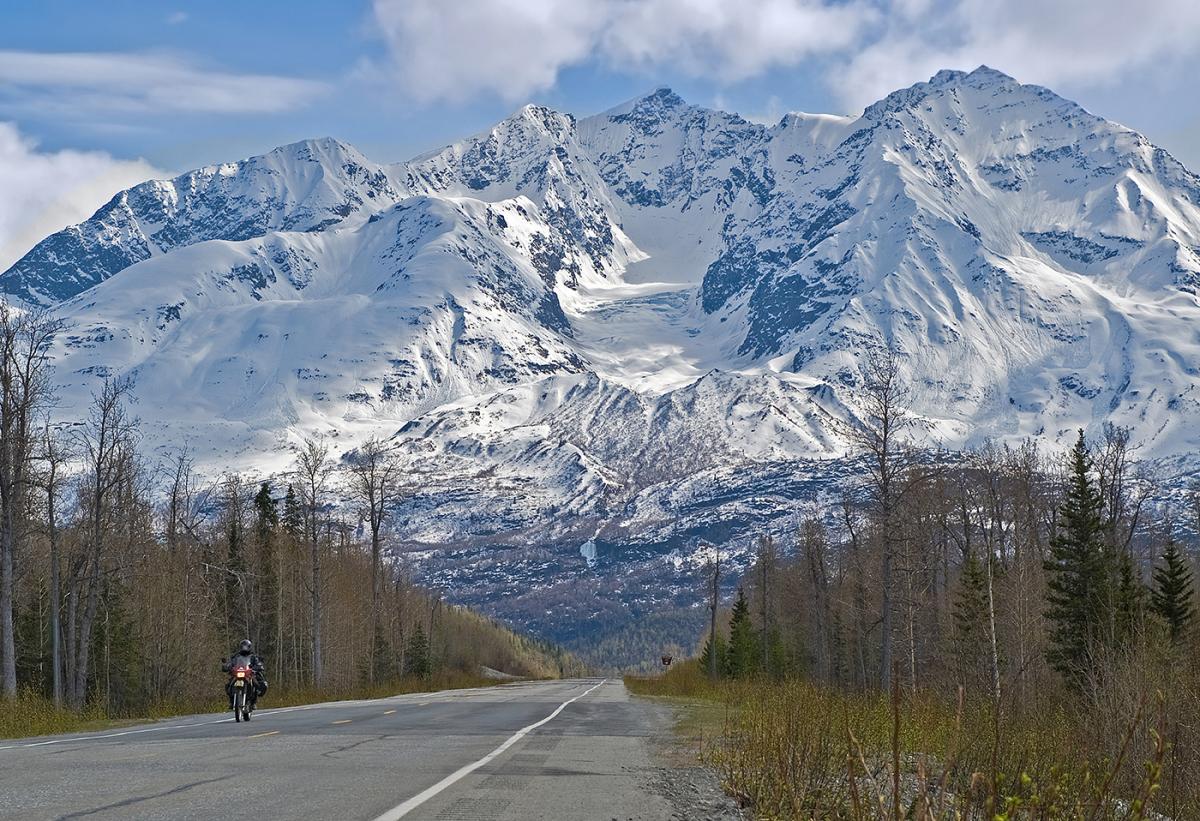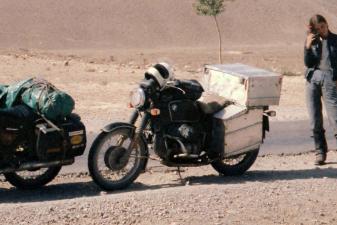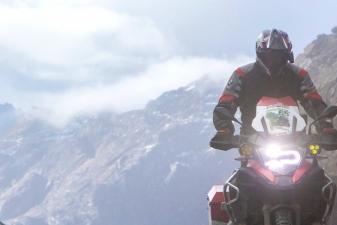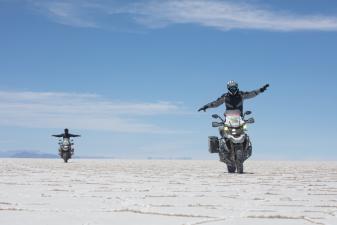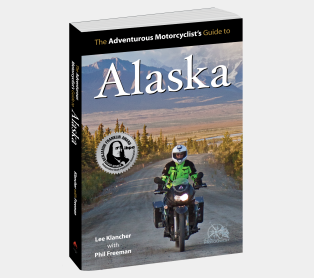How to Avoid Being Eaten by a Grizzly Bear

In this original article, Adventurous Motorcyclist's Guide to Alaska author Lee Klancher diverges from his descriptions of the stunning, sweeping, and utterly spiritual landscape of the Alaskan wilderness, to provide a much needed PSA for all you adventurers soon to embark on the journey of your lifetime. The topic: Bears. More specifically: How to not get eaten by one.
Find everything you need to prepare for your journey across Alaskan highways and backroads in the Adventurous Motorcyclist's Guide to Alaska. "When a bear buries you, keep still until it goes to sleep." - Alaskan Master Guide

The bear is NOT the most dangerous animal in Alaska. (Statistically, domesticated dogs kill more humans in Alaska than any other animal). However, every year or so a human (usually a tourist) falls prey to a bear attack. These attacks are extremely rare and can be avoided. Bears are fast, strong and sometimes aggressive. Learning more about the habits and body language of the bear is a good way to not wind up in its intestinal track.
FAST:
Bears have been clocked at running over 40 miles an hour in short bursts and they "hover craft" over uneven terrain. As you may know, this is as fast as a racehorse. If you think you can outrun a bear, you are a fool. If you think you can outrun the person you are with, then you are not a fool.
STRONG:
They can eat the tires off a three wheeler.
BODY LANGUAGE:
Upset: Jaw popping, hair bristled, pouncing back and forth. Bears are territorial and generally not cool with intruders or surprises. They will make a display of this. They will often bluff charge when feeling threatened. The trick is to know the difference between a bluff charge and real charge - which can be a matter of meters. In the case of a real charge, have your bear protection out and ready (bear spray or rifle).
Curious: Standing on hind legs, ears pointed, nose vigorously sniffing. This is how they judge a situation to be dangerous to them or not.
WIND DIRECTION:
The bears sense of smell is one of the strongest in the animal kingdom. They rely on it more than their poor sense of sight. It is said that they can smell the scent of lipstick buried inside a back pack on the wind from 60 miles away. When you encounter a bear, it is VERY IMPORTANT that you take into account wind direction. If they can see you, but can't smell you, they may encircle you until they get your scent.
WHAT TO DO DURING AN ENCOUNTER:
Make no mistake, the Human is the most dangerous animal in Alaska, and the bears know that! Most bears will run away immediately. If a bear stays around, you need to determine if the situation is dangerous or not. Make sure to get the bear's attention with waving arms and a loud, low voice. Let the bear know you are there and react to them. Floating silently down a river in a raft is a good way to surprise them, so make sure to slap the side of the raft with a paddle to get their attention.
Some bears are used to Humans (Especially in National Parks, known a "Park Bears") and are fine just hanging around you, going about their business. Let them. They mean no harm and are comfortable with you being there.
Mother with cubs: Make voice and motion contact with the bear, and back up slowly. Don't be alarmed if the bear walks to where you were...they just want to get your scent. Be alarmed if she charges.
Male: Stand your ground and talk in a loud, commanding voice. Males are more territorial, and may test your resolve by bluff charging. They will stop short of you by a matter of meters and display aggressive behavior. Let it play out, remain calm and keep talking in a loud, authoritative voice. "Hey bear, Hey bear.."
Young Bear: Many times young bears do not know to fear humans and will hang around you out of curiosity. Make sure to engage the bear in an authoritative voice. They may come dangerously close, at which time you need to let them know you are not comfortable.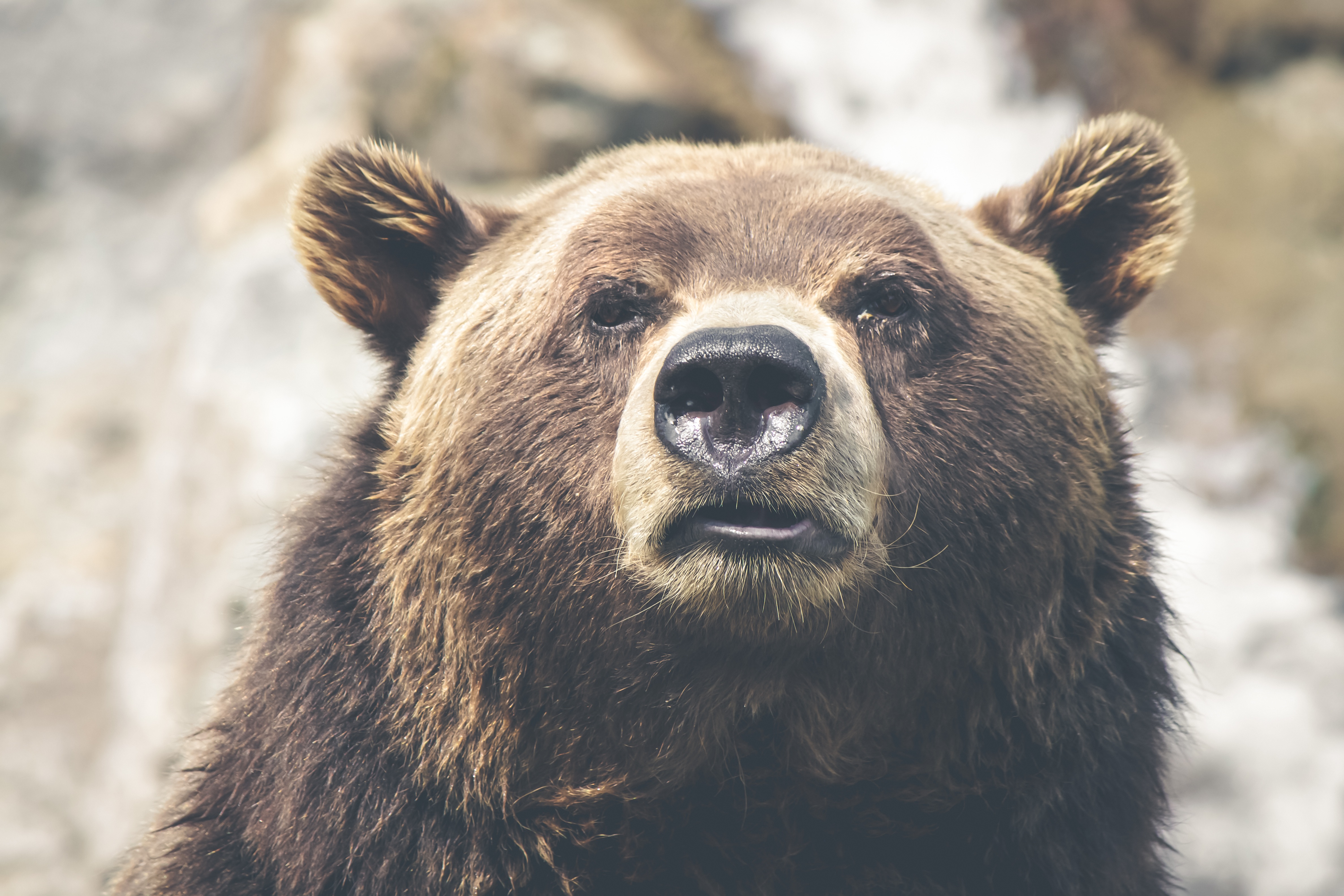
HOW TO AVOID BAD ENCOUNTERS:
Make your presence known. Talk in a loud voice when crashing through thick brush. Do NOT whistle while you walk, thinking the bear will hear you. They have been known to mistake human whistling for bird song. The low audible sound of the human voice will alert the bear. Hold your ground without threatening the bear.
Do NOT surprise a bear.
Do NOT threaten their food source.
BEAR PROTECTION:
The best bear protection is a group of 4 or more people. Bear spray, or a high caliber pistol, rifle or large gauge shot gun are the last resort.
OTHER COUNTER MEASURES:
Throw rocks against rocks and make sure to splash water. Bears don't like this at all. Do not move a bear from it's fishing hole with this tactic.
Rub a stick or rock in your armpit or crotch and throw it near the bear. The bear can then smell it, and identify you and perhaps move away.
SHOOTING A BEAR:
NEVER SHOOT A BEAR, unless they break the 10 yard barrier, and are not showing signs of stopping. Avoid shooting a bear!!
ON THE ROAD:
As a motorcyclist, you should be aware but not too concerned about bears on the road. They generally avoid them and cross right away when they do. It is uncommon to see one from the road way in Alaska.
TYPES OF BEARS:
Brown or Grizzly Bear: The same bear, only the Brown Bear lives near coastal waters, eats more protein and is larger in size and more social with other bears. Grizzlies are smaller, have a larger range, are not as social, and are known to be more aggressive due to lack of food source. The Kodiak Brown Bear is a subspecies with a larger body and head size than the Brown Bear. They live only on Kodiak Island and the outlying islands near Kodiak.
Black Bear: Smaller in size (up to 8 feet) than the Brown Bear with a smaller, conical nose and without the characteristic hump on the back like the Brown Bear. They can range in color from Black to Brown. They are more known for getting into garbage and being a nuisance when a food source is around. They also are responsible for more attacks on humans than Brown Bears.
Polar Bears: White in color and the largest of the bears in Alaska (up to 15 feet in height). You will probably never see a Polar Bear but you will be in their range if you decide to ride to the Arctic Ocean. They are know to actively hunt humans and have no natural predators.
Stay safe and ride on!
For everything you need to know about the dramatic, thrilling, and abundant roads of Alaska with rider's tips, route itineraries, and roadside stops, check out the Adventurous Motorcyclist's Guide to Alaska. 